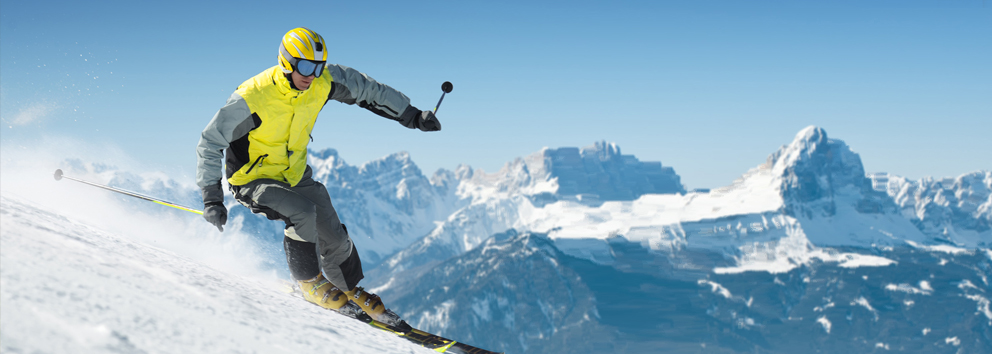
As a Sports Medicine physician specializing in knee ligament and shoulder reconstructive surgery, I have seen numerous skiing related injuries over the last 25 years. Despite the lower incidence of these injuries, there are still more than 500,000 cases in the United States annually. Though foot and ankle injuries are becoming less common, knee ligament sprains and upper extremity injuries are extremely prevalent. We have also seen an elevated number of injuries involving the head and neck region, as well as the lower spine.
After performing extensive research and giving multiple lectures on this topic, I think there are a number of pearls of wisdom to remember while skiing. Most injuries occur within the first few days of skiing because most individuals progress very quickly to a high demand level of activity. The following is a list of recommendations to help reduce the incidence and severity of injuries:
•
Pre-season conditioning programs that include strength training
(focusing on flexibility and agility)
•
Skiing lessons
• Specific instructional programs (e.g. injury prevention courses) prior to going on a skiing trip
• Give your body time to adjust with proper hydration and a high carbohydrate diet, as these elements will protect against fatigue
• Progress slowly, avoid prolonged periods of rest and stop skiing prior to fatigue
• Avoid late afternoon skiing due to changes in snow and weather conditions (highest incidence of injury)
When looking for the appropriate equipment, consider age, height, weight and level of expertise. All skiers should consider the use of a helmet and it is becoming mandatory in certain states across the country. Assure proper binding adjustments, as failure to do so, has been associated with a higher occurrence of skiing related injuries.




